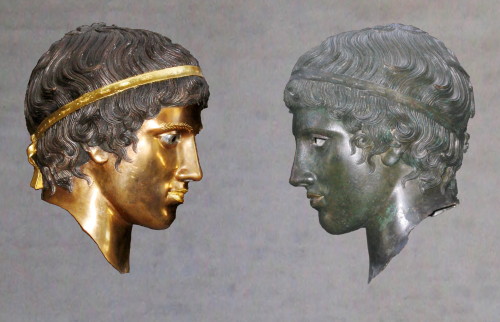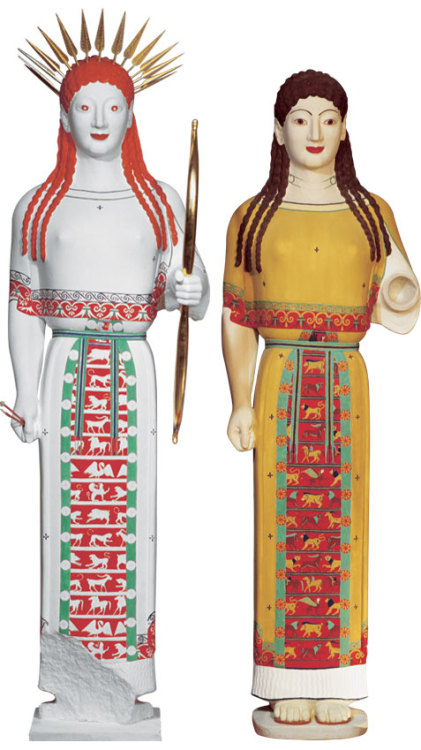workman:The common perception is that the great statues and buildings of ancient Greece and Rome w
workman: The common perception is that the great statues and buildings of ancient Greece and Rome were all pure unpainted stone or green tarnished bronze, but researchers have been arguing that this may not been what these classic monuments really looked like back in the era of their creation. That, in fact, these statues were quite alive and vibrant, full of color. Gods in Color: Painted Sculpture of Classical Antiquity is a travelling exhibition of varying format and extent that has been shown in multiple cities worldwide. Its subject is ancient polychromy, i.e. the original, brightly painted, appearance of ancient sculpture and architecture. It features more than 20 full-size color reconstructions of Greek and Roman works, alongside 35 original statues and reliefs. The color reconstructions are based on close examination of the originals and on scientific analysis of the scarce traces of paint remaining on them. Ultraviolet light, says Ebbinghaus, “brings out ‘paint ghosts,’ differences in the surface structure of the stone caused by different paints and by the weathering of the paints. It can often give you an idea of patterns, even if no pigments survive.” The paint on these reproductions of stone sculptures appears flat, lacking the depth of, say, oil. “We can identify the colorants—mostly minerals and some plants,” says Ebbinghaus, “but binding media are hard to identify. Egg has been used for the reconstructions. If the minerals were ground more finely, a different binding medium used, the paint polished or covered with a protective coating, the effect would be quite different.” “We now assume that almost all Greek marble sculpture was painted,” she says. “These reconstructions can only be approximations,” but at least they dispel a popular misconception—that most statues of antiquity were plain old white. Plain would not be thought ideal until the Renaissance. Researchers believe, particalurly Vinzenz Brinkmann who has been doing this research for the past 25 years, that artists used mineral and organic based colors and after centuries of deterioration any trace of pigment leftover when discovered, would have been taken off during any cleaning processes done before being put on display, washing the historical art clear of its true colors. The findings of this research completley changes the commonly held modern ideas of the ancient world, and the way we view modern sculpture and art today, much of which was based on those classical Greek and Roman styles. Sources: x x x x. -- source link









